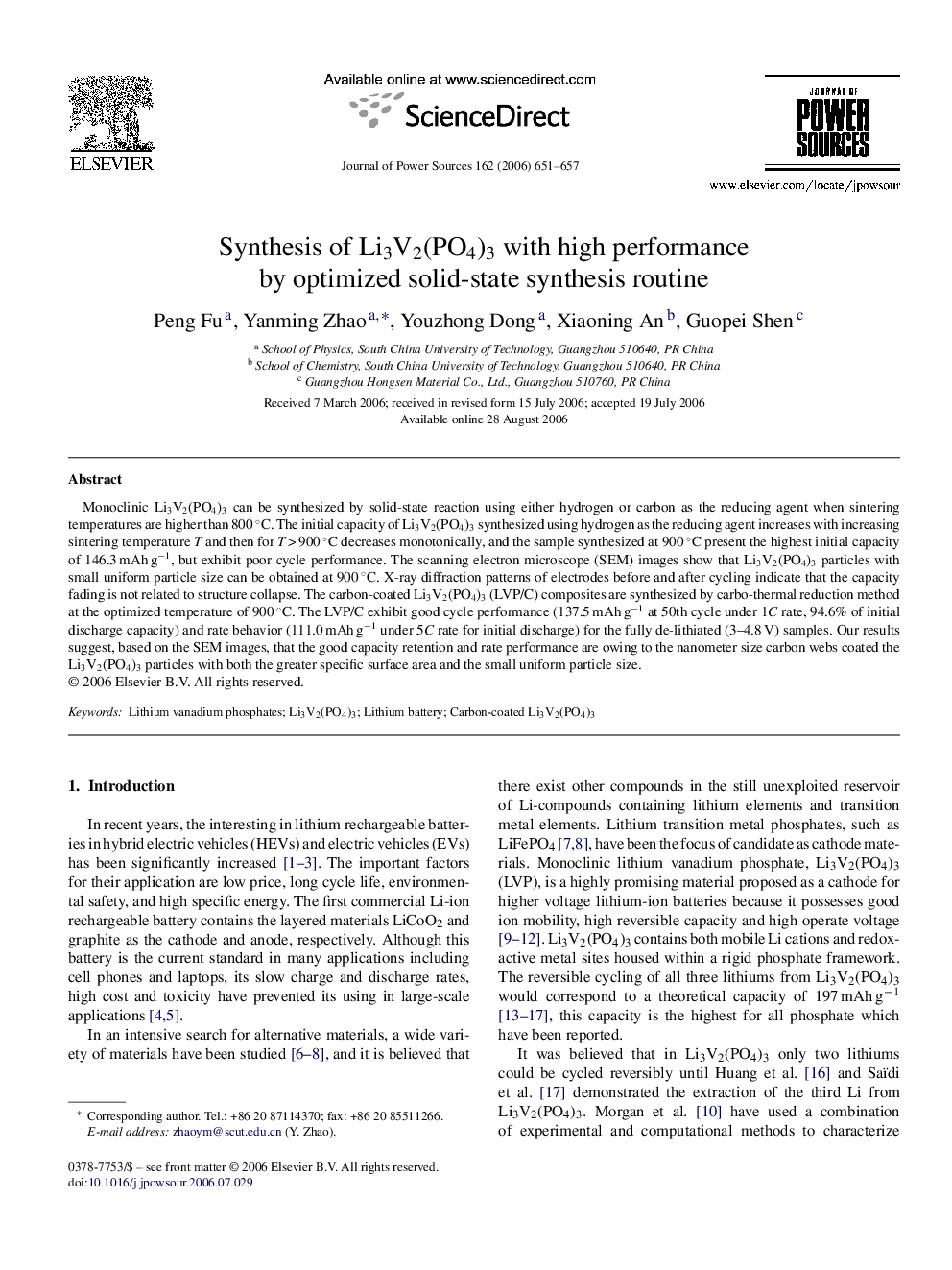| Article ID | Journal | Published Year | Pages | File Type |
|---|---|---|---|---|
| 1291891 | Journal of Power Sources | 2006 | 7 Pages |
Monoclinic Li3V2(PO4)3 can be synthesized by solid-state reaction using either hydrogen or carbon as the reducing agent when sintering temperatures are higher than 800 °C. The initial capacity of Li3V2(PO4)3 synthesized using hydrogen as the reducing agent increases with increasing sintering temperature T and then for T > 900 °C decreases monotonically, and the sample synthesized at 900 °C present the highest initial capacity of 146.3 mAh g−1, but exhibit poor cycle performance. The scanning electron microscope (SEM) images show that Li3V2(PO4)3 particles with small uniform particle size can be obtained at 900 °C. X-ray diffraction patterns of electrodes before and after cycling indicate that the capacity fading is not related to structure collapse. The carbon-coated Li3V2(PO4)3 (LVP/C) composites are synthesized by carbo-thermal reduction method at the optimized temperature of 900 °C. The LVP/C exhibit good cycle performance (137.5 mAh g−1 at 50th cycle under 1C rate, 94.6% of initial discharge capacity) and rate behavior (111.0 mAh g−1 under 5C rate for initial discharge) for the fully de-lithiated (3–4.8 V) samples. Our results suggest, based on the SEM images, that the good capacity retention and rate performance are owing to the nanometer size carbon webs coated the Li3V2(PO4)3 particles with both the greater specific surface area and the small uniform particle size.
